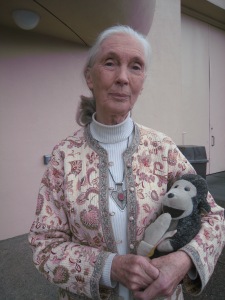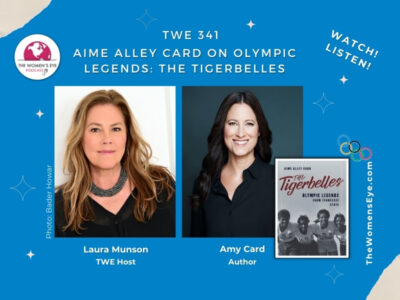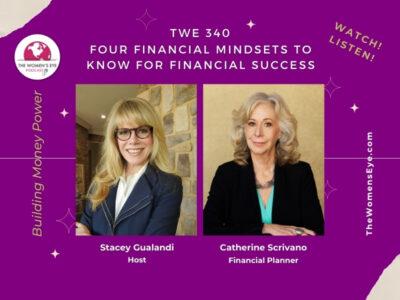
This year Dr. Jane Goodall, the conservationist and world-renowned pioneer in the study of chimpanzee behavior, celebrates the 50th anniversary of her arrival in Gombe, Tanzania, East Africa to begin her life’s work.
Her speech “Gombe and Beyond: The Next 50 Years” at today’s Bioneers Conference in San Raphael, Ca was received with great applause and a standing ovation. I was lucky enough to attend.
Dr. Goodhall gave her unique chimpanzee greeting to begin the lecture. If you haven’t heard it, you must. Here she is at a Great Ape Appreciation Day.
[youtube=https://www.youtube.com/watch?v=dwkstaERPi0]
This morning she spoke about her destiny to work with animals in Africa. She said she owes it all to her mother who supported her from the beginning and even journeyed with her to Africa where she stayed for four months.
Dr. Goodall was captivated by animals at a very young age and told the story of collecting hen’s eggs. She was so curious about where they came from that she hid in a hen’s house to find out. It was there she said she learned patience.
She worked as a waitress to earn money until she met anthropologist and archeologist Louis Leakey who gave her a job as a secretary. That experience gave her the opportunity to learn about chimpanzees. When she needed money to study with the animals, he went to the National Geographic Society which assisted her.
In fact, the October issue of their magazine has an extensive feature on Dr. Goodall’s life, tracing her five decades in Africa. She has authored a new book , “Jane Goodhall: 50 Years at Gombe.”
Research is so advanced now, she reports, that we can find out who the fathers are of certain chimps. How sad, she said, that they are becoming extinct. There were 1,000,000 in 1960. Today there are only 300,000. She finds “no sharp line between us and them, only a very blurry line.”
She spoke of the many programs that she has started to educate people about animals and conservation from the “Take Care” program to “Roots & Chutes” that began with twelve high school students and is now in 120 countries. She has seen wonderful projects develop around the world as a result of the “Roots” program from young people taking animals to see older people to teens cleaning up an entire river.

Despite the harm that’s been done to this planet and the loss of hope that she’s witnessed in people, she remains optimistic. She thinks that young people will make it a better and more wholesome place, but “we just have to have the right mindset and understand that the human brain must be linked to the heart.”
To close, she asked, “Can we save the world?” The answer in the room was a resounding yes.




Leave a Reply